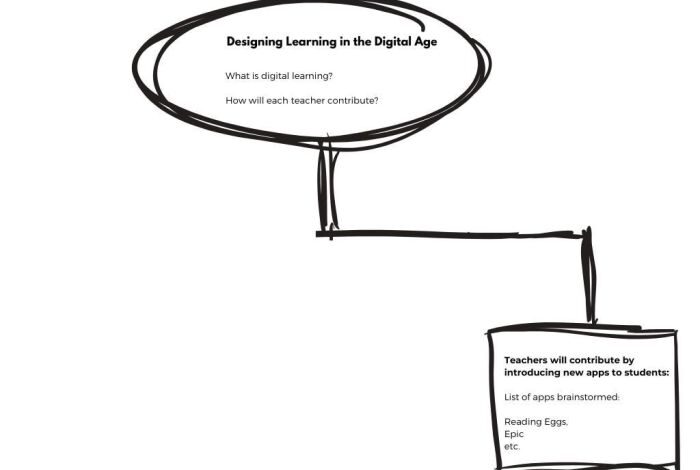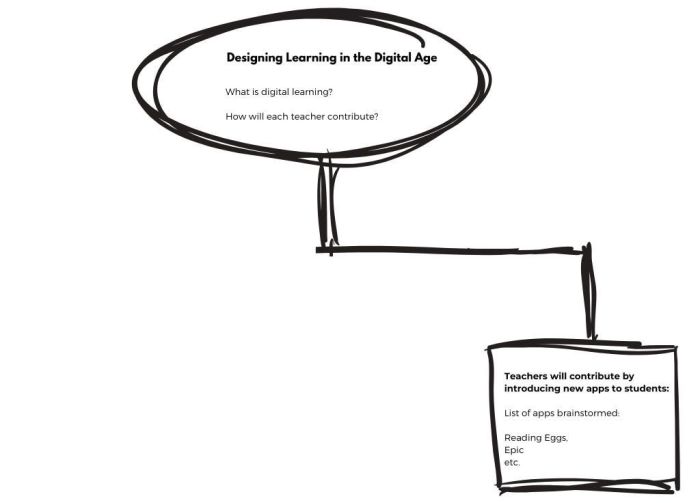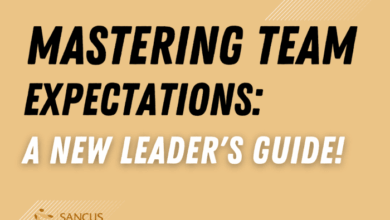
How to run a brainstorming session is crucial for unlocking innovative ideas and achieving collective success. This guide delves into the entire process, from defining the session’s purpose to evaluating the outcomes, providing a comprehensive framework for productive brainstorming.
We’ll explore different brainstorming session types, like product development, marketing campaigns, and problem-solving, and discuss the essential factors to consider when designing your session. From selecting the perfect location to establishing clear ground rules, this guide covers every step, ensuring your session is engaging and effective. We’ll also explore methods for capturing and evaluating ideas, and finally, how to ensure your brainstorming efforts translate into actionable steps.
Defining the Purpose and Scope of the Session
A successful brainstorming session hinges on a clear understanding of its objectives and scope. This initial phase lays the foundation for a productive and focused discussion, ensuring everyone contributes effectively to achieve desired outcomes. Without a well-defined purpose, the session can quickly become unfocused, leading to wasted time and limited value.Understanding the type of brainstorming session required is crucial for success.
A product development session will differ significantly from a problem-solving session or a marketing campaign brainstorming session. This difference in focus directly impacts the session’s structure, participant selection, and the expected outcomes.
Types of Brainstorming Sessions
Brainstorming sessions cater to a wide range of needs. Product development sessions, for example, aim to generate new ideas for products or services. Marketing campaign sessions focus on strategies and creative concepts for promoting a product or service. Problem-solving sessions tackle specific challenges or roadblocks in a project or process. Each type demands a tailored approach.
Factors to Consider When Choosing a Format
Several factors influence the selection of the appropriate brainstorming session format. The complexity of the problem or opportunity, the available resources, the level of expertise within the team, and the desired outcomes all play a crucial role. For instance, a complex product development project may require a more structured approach than a simple problem-solving session.
Importance of Setting Clear Objectives
Clearly defined objectives are essential for guiding the brainstorming session. Objectives provide direction, focus the discussion, and ensure that the session remains relevant to the overall goals. Without clearly stated objectives, participants might generate irrelevant ideas, leading to a less productive session.
Defining the Specific Problem or Opportunity
A well-defined problem or opportunity is paramount for a productive brainstorming session. This requires a concise and specific statement of the issue or opportunity to be addressed. This initial statement serves as the guiding principle for the entire session. For example, instead of “improve sales,” a more precise objective could be “increase sales of product X by 15% in the next quarter by targeting Gen Z consumers.”
Desired Outcomes of the Brainstorming Session
The desired outcomes should be meticulously Artikeld in advance. This involves specifying the tangible and measurable results expected from the session. For example, desired outcomes for a product development session might include a minimum of five viable product concepts, three detailed prototypes, and a prioritized list of next steps.
Key Stakeholders to Invite
Identifying and inviting the right stakeholders is critical for a productive brainstorming session. The specific stakeholders will vary based on the type of session. For a product development session, this might include engineers, designers, marketing specialists, and potentially customers or end-users. In a marketing campaign session, it could involve marketing professionals, sales representatives, and advertising agencies.
| Session Type | Key Stakeholders |
|---|---|
| Product Development | Engineers, Designers, Marketing, Sales, Customers |
| Marketing Campaign | Marketing, Sales, Advertising, Social Media, Customers |
| Problem Solving | Project Managers, Team Leaders, Subject Matter Experts |
Preparing for the Session

A successful brainstorming session hinges on meticulous preparation. Proper planning ensures a focused and productive environment where innovative ideas can flourish. By anticipating potential challenges and laying the groundwork for effective collaboration, you significantly increase the chances of generating valuable insights. A well-structured approach sets the stage for a memorable and impactful brainstorming experience.Effective preparation goes beyond simply gathering participants.
It involves creating a supportive atmosphere, ensuring access to necessary resources, and establishing clear expectations. This comprehensive approach fosters a sense of shared purpose and encourages participants to contribute their best work.
Creating a Conducive Environment
A brainstorming session thrives in an environment conducive to creativity. This means minimizing distractions and maximizing comfort. Participants need to feel relaxed, safe, and empowered to share their thoughts without fear of judgment. A comfortable setting, free from interruptions, is essential. This includes ensuring sufficient space, comfortable seating, and appropriate lighting.
The physical environment plays a crucial role in shaping the overall experience.
Selecting the Location and Resources
Choosing the right location is vital. The space should accommodate the number of participants, allow for comfortable movement, and facilitate interaction. Consider factors like accessibility, available technology, and the ambiance of the location. For example, a brightly lit conference room can be a great option, but a more informal setting like a co-working space can foster more casual and creative interactions.
Access to necessary resources like whiteboards, flip charts, or digital presentation tools should be easily accessible. A well-equipped room will ensure that the session runs smoothly and that ideas can be effectively recorded and shared.
Kickstarting a brainstorming session? Focus on clear objectives and a relaxed atmosphere. Encouraging diverse viewpoints is key, and the US mobile industry’s current state, as detailed in the US mobile catch up game plan , offers ample room for innovative ideas. Ultimately, a well-structured session, with active listening and respectful contributions, is the best recipe for success.
Essential Materials and Tools
Providing appropriate materials is crucial for a productive session. A well-stocked brainstorming session kit should include pens, markers, sticky notes, notepads, and a projector for presenting materials. For virtual sessions, ensuring everyone has access to a shared digital whiteboard or collaborative document is critical. Digital tools can enhance interaction and streamline the capturing of ideas. Consider the tools best suited for the task, whether physical or digital.
Establishing Ground Rules and Etiquette
Clear ground rules are vital for fostering a productive environment. Ground rules should clearly Artikel expectations regarding participation, confidentiality, and respectful communication. These ground rules create a safe space for participants to contribute without hesitation. Examples of effective ground rules include encouraging active listening, respecting diverse opinions, and maintaining confidentiality regarding shared ideas. The rules must be established at the outset and consistently reinforced throughout the session.
Effective Icebreakers
Effective icebreakers are essential for initiating interaction and fostering a sense of camaraderie among participants. Icebreakers should be engaging and designed to break down initial barriers and encourage interaction. Examples include simple introductions, fun group activities, or brainstorming prompts related to the topic. For instance, “Two Truths and a Lie” can be an effective way to learn more about each other.
These activities can create a relaxed atmosphere and ensure that all participants feel comfortable contributing.
Facilitating the Session
Brainstorming sessions are most effective when facilitated skillfully. A skilled facilitator guides the group, ensuring everyone feels heard and respected, while keeping the conversation focused and productive. This involves a range of techniques to manage time, encourage participation, and navigate potential challenges. The goal is to create an environment where innovative ideas can flourish.Effective facilitation is crucial for unlocking the full potential of a brainstorming session.
A structured approach, combined with a keen understanding of group dynamics, is vital to steer the session towards achieving its objectives.
Encouraging Active Participation
Different individuals contribute in different ways. To encourage participation from all attendees, facilitators should employ various techniques. Active listening, open-ended questions, and creating a psychologically safe environment are key elements. For example, assigning specific roles or responsibilities to individuals can give them a sense of ownership and motivation to contribute. Furthermore, using techniques like round-robin discussions, where each person shares their ideas in turn, can ensure everyone has a chance to speak.
Positive reinforcement and acknowledgment of contributions are crucial in fostering a collaborative atmosphere.
Managing Time and Transitions
Time management is critical to maintain momentum and ensure the session stays on track. A clear agenda, outlining the allocated time for each activity, is essential. Facilitators should be prepared to adjust the schedule as needed, but the overall structure should be well-defined. Smooth transitions between activities are achieved by clearly communicating the shift in focus and providing brief summaries or transitions between activities.
Want to run a killer brainstorming session? Start by creating a relaxed atmosphere, encouraging diverse perspectives, and providing clear guidelines. Thinking about HP’s new tablet strategy, like the hp revives its tablet strategy with a new slate , shows how innovative thinking can lead to exciting product launches. Ultimately, a great brainstorming session hinges on open-mindedness and active participation from all involved.
This helps to avoid confusion and maintain a continuous flow.
Steering the Discussion
The facilitator acts as a guide, steering the conversation towards the desired outcomes. Using open-ended questions to encourage deeper exploration of ideas is a crucial strategy. Redirecting the discussion towards a specific area when it veers off-topic is also a critical skill. Recognizing when a topic is exhausted or has reached a dead end is crucial, allowing for timely transitions to other areas.
Handling Disagreements
Disagreements are inevitable in group settings. Facilitators must be prepared to address them constructively. Encouraging respectful dialogue and active listening are vital to de-escalate potential conflicts. Acknowledging the validity of differing perspectives and seeking common ground are important steps in fostering a productive environment. A neutral approach, refraining from taking sides, is vital to maintain impartiality.
A clear set of ground rules for respectful discussion can also be helpful.
Brainstorming sessions often need a structured approach. Start by clearly defining the problem or goal, encouraging diverse perspectives, and jotting down every idea, no matter how wild. Thinking outside the box is key, and mobile devices, like those used in mobile devices help chart the future of marine navigation , are revolutionizing various industries. This translates well to brainstorming, as they allow for quick note-taking and the sharing of ideas in real-time.
Ultimately, the best brainstorming sessions foster a collaborative and creative environment.
Capturing and Documenting Ideas
Effectively capturing and documenting ideas is essential for later analysis and implementation. Using visual aids, such as whiteboards or digital tools, allows for immediate recording of contributions. Creating a central repository for all ideas, such as a shared document or a dedicated brainstorming board, is a key element. The facilitator should maintain meticulous notes of ideas, ensuring clarity and comprehensiveness.
Recording details of each idea, including who contributed it and any supporting rationale, is a best practice.
Potential Challenges
| Challenge | Possible Solution |
|---|---|
| Dominating participants | Encouraging quieter participants, setting time limits for speaking, and using techniques like round-robin discussions. |
| Lack of participation | Clarifying the purpose of the session, making participants feel comfortable, and using interactive activities to engage them. |
| Off-topic discussions | Redirecting the conversation back to the main objective, providing brief summaries or transitions, and clearly communicating the agenda. |
| Time constraints | Sticking to the agenda, prioritizing ideas, and utilizing timeboxing techniques. |
| Unclear objectives | Reiterating the purpose and scope of the session, establishing clear guidelines, and ensuring everyone is on the same page. |
| Resistance to new ideas | Creating a safe environment, acknowledging the validity of differing opinions, and using creative techniques to foster open-mindedness. |
Recording and Evaluating Ideas

Brainstorming sessions are often brimming with creative energy, but capturing and evaluating all those ideas effectively is crucial for success. A well-structured approach to recording and evaluating ideas ensures that no valuable insight is lost and that the most promising concepts are prioritized for further development. This phase requires a shift from the free-flowing generation of ideas to a more organized and analytical approach.The key to a productive brainstorming session is not just generating ideas, but also systematically recording, categorizing, and evaluating them to identify the most impactful solutions.
A clear and consistent process is essential for extracting maximum value from the session and turning raw inspiration into actionable plans.
Recording Ideas in a Structured Format, How to run a brainstorming session
Recording ideas in a structured format helps maintain clarity and allows for easier review and analysis. This process ensures that every idea is documented, regardless of its perceived importance at the time. Detailed notes capture the essence of the idea, including the context, rationale, and any supporting evidence.
Tools and Methods for Capturing Brainstorming Ideas
Various tools and methods can enhance the idea capture process. Whiteboards and flip charts provide a visual record, ideal for capturing ideas on the spot. Digital tools like shared documents, mind mapping software, and cloud-based platforms offer versatility and facilitate collaboration among participants. Sticky notes allow for quick brainstorming and visual organization of concepts, enabling easy movement and grouping of ideas.
Categories for Classifying Ideas
A well-structured classification system helps categorize ideas and facilitates further analysis. The following table Artikels potential categories for classifying ideas:
| Category | Description |
|---|---|
| Functionality | Focuses on the core purpose and actions of the idea. |
| Feasibility | Evaluates the practicality and resources required to implement the idea. |
| Impact | Assesses the potential positive and negative consequences of the idea. |
| Innovation | Highlights the originality and uniqueness of the idea. |
| Market Potential | Evaluates the commercial viability and market demand for the idea. |
Evaluating Generated Ideas
Evaluating ideas involves a critical assessment of their potential value, feasibility, and alignment with project goals. Consideration of factors such as feasibility, cost, and potential risks is crucial. Ideas should be evaluated objectively based on established criteria.
Prioritizing and Selecting Promising Ideas
Prioritization techniques, such as scoring methods and voting systems, can help select the most promising ideas. This process often involves a scoring system that weights different criteria, such as feasibility, market potential, and innovation. The selection process should be transparent and justified, ensuring buy-in from all stakeholders. This might involve a weighted voting system or a prioritization matrix, where different factors like potential impact and resources needed are assessed.
Evaluating the Effectiveness of the Brainstorming Session
The effectiveness of a brainstorming session can be evaluated by assessing its contribution to achieving the defined goals. Post-session feedback from participants helps determine the session’s strengths and weaknesses. Analyzing the number of ideas generated, the quality of the ideas, and the level of engagement during the session can provide valuable insights into its effectiveness. Metrics such as the number of ideas generated, the quality of those ideas, and the level of engagement can be recorded to assess the session’s effectiveness.
Post-Session Actions: How To Run A Brainstorming Session
Bringing a brainstorming session to a successful conclusion involves more than just recording ideas. Effective implementation hinges on clear post-session procedures for distributing information, presenting ideas, following up with participants, and putting selected ideas into action. This phase ensures the session’s output translates into tangible results.A well-structured post-session approach transforms raw brainstorming insights into actionable plans, fostering a collaborative environment where ideas are not just generated but also implemented.
This section details the crucial steps to ensure your brainstorming session yields tangible outcomes.
Creating a Plan for Distributing Collected Information
A crucial step after a brainstorming session is to distribute the collected information effectively. This ensures that everyone involved has access to the ideas generated, fostering transparency and shared understanding. A well-defined distribution plan also promotes efficient idea tracking and collaboration throughout the implementation phase.
- Identify the relevant stakeholders who need access to the information.
- Choose the most suitable method for sharing the information, considering factors like the volume of data, accessibility requirements, and preferred communication styles of the recipients.
- Establish clear guidelines for accessing and using the shared information, ensuring confidentiality and appropriate usage.
Procedure for Sharing and Presenting Ideas
A well-structured procedure for sharing and presenting ideas ensures that the brainstorming session’s output is communicated effectively and efficiently. This process helps ensure that the ideas are understood and appreciated by all relevant stakeholders, promoting a collaborative approach.
- Develop a concise summary of the key ideas generated during the session, highlighting their potential impact and benefits.
- Organize the ideas into categories or themes to facilitate easier understanding and prioritization.
- Create presentations or reports that effectively communicate the ideas and their potential applications.
Following Up with Participants After the Session
Following up with participants after a brainstorming session is critical for maintaining engagement and ensuring buy-in. This step allows for feedback, clarification, and potential adjustments to the generated ideas. Prompt and meaningful follow-up fosters a sense of shared ownership and encourages participation in subsequent stages.
- Send a follow-up email summarizing the session’s key takeaways and highlighting the next steps.
- Encourage participants to share their thoughts and feedback on the generated ideas.
- Schedule a follow-up meeting to address any questions, concerns, or clarifications regarding the ideas.
Implementing the Selected Ideas
Implementing selected ideas involves a structured approach that translates the brainstorming outputs into practical actions. This phase requires clear communication, defined roles, and consistent monitoring. This will ensure the ideas move from concept to reality.
- Prioritize the ideas based on feasibility, potential impact, and resource availability.
- Assign responsibilities for each idea to specific individuals or teams.
- Establish clear timelines and deadlines for each task, ensuring a well-defined schedule.
Template for Creating an Action Plan
A well-designed action plan template serves as a guide for organizing and tracking the implementation of selected ideas. This ensures accountability, transparency, and progress monitoring.
| Idea | Description | Responsible Person | Timeline | Status |
|---|---|---|---|---|
| Idea 1 | Develop a new marketing campaign | Marketing Team | Q3 2024 | In Progress |
Checklist for Ensuring Follow-Through of Ideas
A checklist serves as a practical tool to ensure the follow-through of brainstorming ideas. It helps to keep track of progress, identify roadblocks, and ensure that each idea is diligently implemented.
- Review and update the action plan regularly.
- Monitor the progress of each task and address any roadblocks.
- Provide regular updates to all stakeholders on the progress of the selected ideas.
Example Brainstorming Sessions
Brainstorming sessions are crucial for generating innovative ideas and finding effective solutions. They provide a structured environment for diverse perspectives to converge, fostering creativity and problem-solving. Understanding different types of brainstorming sessions and their specific structures can significantly impact their effectiveness. This section provides detailed examples of brainstorming sessions tailored for product development, marketing campaigns, and problem-solving.
Product Development Brainstorming Session
Product development brainstorming sessions are focused on generating ideas for new products, improving existing ones, or identifying gaps in the market. A well-structured session ensures a wide range of ideas are considered, leading to a more robust and innovative product.
| Time | Activity | Participants | Expected Outcomes |
|---|---|---|---|
| 10:00 – 10:15 | Introduction and Goal Setting | All participants | Define the specific product area to brainstorm. Example: “New features for our existing mobile app.” |
| 10:15 – 10:45 | Idea Generation (Freewheeling) | All participants | Encourage wild ideas without judgment. Examples: “Voice-activated controls,” “Gamified learning modules,” “Integration with social media platforms.” |
| 10:45 – 11:15 | Idea Clustering and Prioritization | All participants | Group similar ideas and prioritize them based on feasibility, market demand, and potential impact. |
| 11:15 – 11:30 | Discussion and Refinement | All participants | Discuss the prioritized ideas, refine them, and identify potential challenges. |
| 11:30 – 12:00 | Action Planning | All participants | Assign tasks, deadlines, and resources for each prioritized idea. |
Marketing Campaign Brainstorming Session
Effective marketing campaigns require creative strategies. A brainstorming session dedicated to marketing campaigns can unlock fresh perspectives and innovative approaches. The session structure should encourage creative ideas while maintaining focus on the campaign’s objectives.
| Time | Activity | Participants | Expected Outcomes |
|---|---|---|---|
| 10:00 – 10:15 | Introduction and Campaign Overview | All participants | Review the campaign goals, target audience, and budget constraints. Example: “Boosting brand awareness for a new product launch.” |
| 10:15 – 10:45 | Idea Generation (Focus on Channels) | All participants | Brainstorm various marketing channels to reach the target audience. Examples: Social media campaigns, influencer collaborations, content marketing. |
| 10:45 – 11:15 | Idea Clustering and Messaging | All participants | Group similar ideas and refine the messaging for each channel. Example: “Creating a series of Instagram reels demonstrating product use.” |
| 11:15 – 11:30 | Discussion and Refinement (Budget Allocation) | All participants | Discuss the potential costs and allocate resources for each campaign element. |
| 11:30 – 12:00 | Action Planning | All participants | Assign tasks, deadlines, and resources for each prioritized campaign idea. |
Problem-Solving Brainstorming Session
Problem-solving brainstorming sessions are designed to address specific challenges. A structured approach can facilitate a more efficient and productive session, ensuring that various solutions are considered.
| Time | Activity | Participants | Expected Outcomes |
|---|---|---|---|
| 10:00 – 10:15 | Problem Definition | All participants | Clearly define the problem to be solved. Example: “Low customer retention rates.” |
| 10:15 – 10:45 | Data Analysis | All participants | Analyze relevant data to understand the root cause of the problem. Example: “Analyzing customer feedback forms.” |
| 10:45 – 11:15 | Brainstorming Possible Solutions | All participants | Generate a wide range of potential solutions, encouraging diverse perspectives. Example: “Loyalty programs,” “Improved customer service channels,” “Enhanced product usability.” |
| 11:15 – 11:30 | Solution Evaluation | All participants | Evaluate the feasibility, cost, and potential impact of each solution. |
| 11:30 – 12:00 | Action Planning | All participants | Develop a plan to implement the chosen solution. Example: “Pilot a loyalty program with a specific customer segment.” |
Last Word
In conclusion, running a successful brainstorming session is a multifaceted process that requires careful planning and execution. By following the steps Artikeld in this guide, you can create a dynamic environment where diverse perspectives converge, sparking creativity and leading to innovative solutions. Remember, the key to a fruitful brainstorming session lies in preparation, facilitation, and thoughtful follow-up. So, go forth and ignite your next brainstorming session with confidence!






